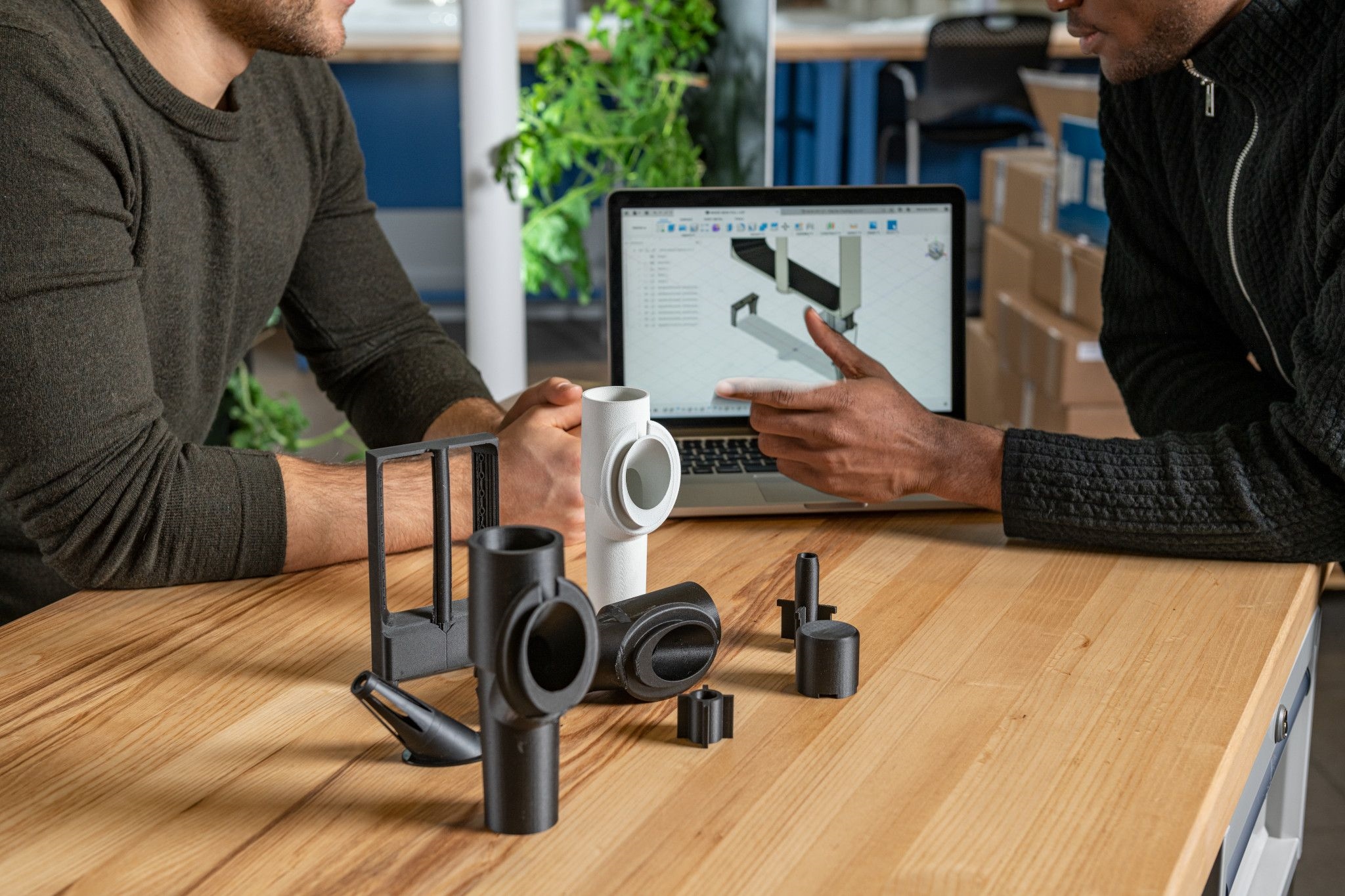When you have a brilliant idea for a new product, what’s the biggest hurdle? For many of us in Nigeria and West Africa, we acknowledge the skill gap in the design knowledge domain, but for most, it's not the design itself, but the long, frustrating gap between concept and creation. We lose valuable time and money because getting a working prototype can take weeks, even months. This is often why so many great ideas get stuck and never see the light of day.
But that's all changing, and it's happening right here, right now.
The Old Way: High Costs, Long Waits
Traditionally, manufacturing in our region has depended heavily on imports. Need a specific part? You order it from overseas. This process is slow, expensive, and leaves us vulnerable to supply chain issues. This reliance on a "wait and see" model has stifled our ability to innovate quickly. It’s a major reason why we don't see as many product launches compared to the rest of the world. An idea goes from a drawing to a standstill, trapped between design and production.
The Game-Changer: Additive Manufacturing & Small-Batch Production
Imagine this: You have a CAD file for a new part. Instead of waiting weeks, you can have a physical, working prototype in as little as 12 to 24 hours. This isn’t a futuristic fantasy; it's the power of 3D printing and small-batch manufacturing.
This is the very essence of additive manufacturing, a process that builds a part layer by layer from a digital file. It’s not just about creating cool gadgets; it's a revolutionary way of thinking about production. It allows for on-demand creation of custom parts and prototypes, drastically cutting down on costs and speeding up the entire development cycle.
Real-World Impact: Prototyping is Just the Start
The applications of this technology are vast and transformative. In industries across West Africa, we are seeing immediate benefits:
- Healthcare: Custom medical devices, prosthetics, and even surgical tools can now be designed and produced locally, tailored to a patient’s specific needs. We at Generative CAD are happy to have supported some startups in building industry-redefining products.
- Automotive & Machinery: Instead of importing expensive spare parts that can take months to arrive, companies can now print them on demand, reducing downtime and maintenance costs. An interesting sector we are seriously engaging with.
- Consumer Electronics: Startups can rapidly prototype new gadgets, test them with real users, and refine their designs in a fraction of the time, allowing them to compete with global players. We have worked with many start-ups and companies in this area.
- Agriculture: Nigeria is a food-producing powerhouse, but we face challenges with equipment maintenance. Imagine a farmer needing a small, custom-fit gear for a water pump or a specific tool for a harvester. Instead of waiting weeks for an imported part, a local company can 3D print it on demand, minimising downtime and maximising yield. This capability also extends to creating custom parts for automated farming equipment, enabling precision agriculture right here at home. A critical and interesting sector we are seriously engaging with.
- Oil and Gas: This industry is all about precision and uptime. When a legacy part fails on an oil rig or in a refinery, every hour of downtime costs millions. Additive manufacturing offers a lifeline by allowing engineers to rapidly produce spare parts, specialised jigs, and corrosion-resistant components directly on-site or nearby. This not only slashes logistical headaches and lead times but also ensures the safety and efficiency of critical operations. In fact, companies like NNPC are already exploring the use of metal additive manufacturing to address these very challenges. We are happy to be part of the team that trained 20 NNPC employees on advanced mechanical design, reverse engineering, additive manufacturing and design for additive manufacturing.
- Education: We must empower the next generation of innovators. By bringing 3D printers and scanners into our universities and vocational schools, we're giving students the tools to think differently. They can move beyond theoretical concepts and physically build their ideas—from engineering and architecture models to complex scientific instruments. This hands-on experience is critical for developing the skills needed for Industry 4.0 and fostering a culture of practical problem-solving. It's how we'll bridge the gap between classroom knowledge and real-world application. We have worked with many schools across primary, secondary and tertiary institutions, both public and private.
- Fashion: African fashion is known globally for its creativity and vibrant designs. Additive manufacturing is adding a new layer of innovation. Designers can now create intricate, one-of-a-kind accessories, complex embellishments for garments, and even 3D-printed jewellery that would be impossible with traditional methods. This technology enables customisation on a scale we've never seen before, allowing designers to create unique pieces for individual clients with zero material waste, making the industry more sustainable. We are working with many designers to redefine African fashion with 3d printing.
Fail Fast, Innovate Faster
I've always believed that in the next five years, a product's success won't be determined by how "perfect" its initial design is. It will be decided by the speed of its prototyping. The faster you can test an idea, get feedback, and make improvements, the better your chances of winning.
This is why I constantly tell founders and entrepreneurs: "Don't wait until you 'perfect' the design. Build a prototype, test it, fail fast, and improve. Speed matters."
Additive manufacturing isn't just a technological upgrade; it's a new mindset. It's about embracing a rapid, iterative process that will drive innovation and help local businesses compete on a global scale. The future of manufacturing is here, and it’s built right here at home.
Are you ready to embrace the future of manufacturing?
At Generative CAD, we are dedicated to helping you turn your ideas into reality at the speed of innovation. Contact us to learn how additive manufacturing can benefit your business.


